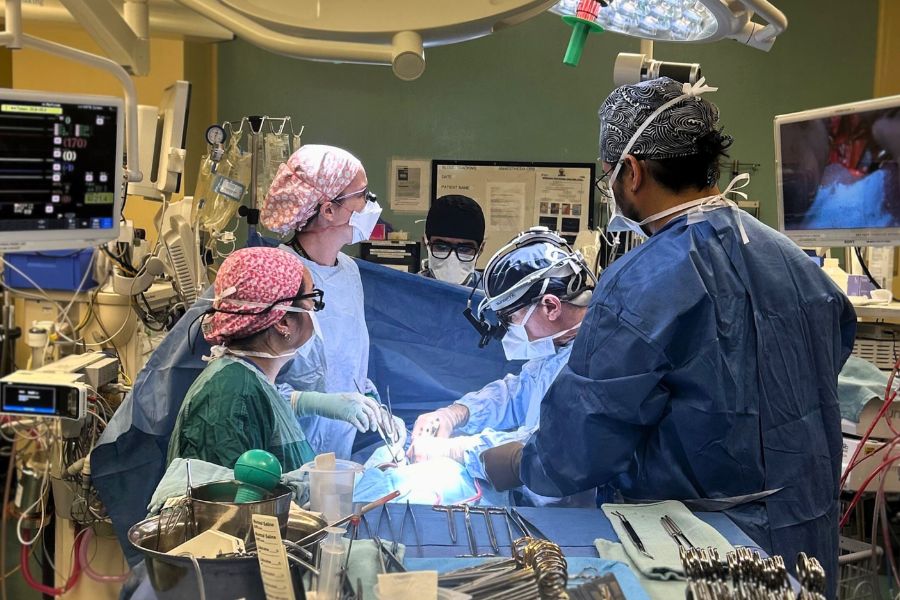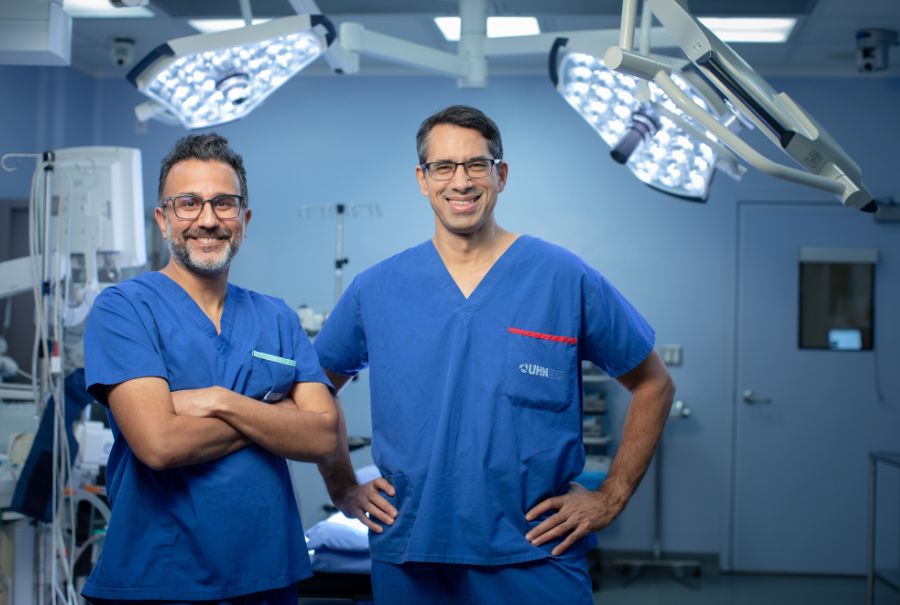By Dr. Fayez Quereshy
Faith and fear have been constant themes during this pandemic. In the beginning, there were messages from colleagues around the world that painted a picture so catastrophic that it seemed surreal. Triage decisions, previously unimaginable, were being made owing to limited resources. Specifically, the lack of ventilators and critical care medications in Europe forced healthcare providers to make seemingly impossible decisions. Ironically, before the news from Europe could even really sink in, this virus had overtaken New York. Myopically, we have often thought that the North American healthcare system is shielded from the challenges of other jurisdictions. With New York under siege by COVID-19, it became very real, very quick. It was like the first flame of a lit match, dramatic and unpredictable.
Perhaps even the most experienced leaders might have been stunned at the sheer pace of this global event, but I was only a few months into the role of Clinical Vice President when the World Health Organization declared COVID-19 a pandemic. My learning curve exponentially increased.
‘I have to confess, the early days of Wave One, where uncertainty was rampant and the fear of the unknown unprecedented, were a serious test of my inherent optimism.’
– Dr. Fayez Quereshy
Admittedly, as a surgeon, I find joy in unravelling complicated problems and working with teams to come up with creative solutions. The more challenging the incident, the more it fuels my drive to find an answer. But I have to confess, the early days of Wave One, where uncertainty was rampant and the fear of the unknown unprecedented, were a serious test of my inherent optimism. As the pandemic encroached on our borders and case numbers started to rise in Ontario, my father suffered a major illness. They often say that things come in threes…I was bracing myself for what was to come. My father was admitted to Toronto General Hospital and I am indebted to our colleagues who provided exceptional care. While at TGH, I expected that I could keep a close eye on him. However, in reality, I was spending every minute working with a team of incredible leaders helping to navigate our hospital through its first modern pandemic amidst a worldwide lockdown.
I was tasked with leading UHN’s ramp down strategy. I sat in a room with some of the most capable leaders in the organization and we created a plan that would reduce our services by 75 per cent, overnight. The fear in that room was palpable. We had a responsibility to ensure we kept our patients and staff safe, in the context of minimal information and facts about this deadly virus. We also recognized our role of being strong public health partners with neighbouring institutions, and the need to create capacity for the expected tide of patients who were not yet in the system. With the uncertainty of the virus, its epidemiology, the pattern of spread, it would be misleading not to acknowledge that we were afraid – for ourselves, our patients, and our loved ones.
My wife is an anesthesiologist at Scarborough Grace, a hospital that was, and continues to be, hard hit by COVID. In her role, she is exposed to aerosol generating procedures everyday. Even though I knew she was taking every precaution, hypervigilent about PPE, I worried about her. In fact, I still worry about her. And she worries about me. However, like all of us in healthcare, we both have a commitment to take care of patients, work within a team, at times a staff to lead, and always a family to care for. One year into the pandemic, I recognize more than ever, that it is okay to be afraid. In fact, it is completely natural. Using the fear as motivation is what is critical.
Throughout the pandemic, the science of this deadly virus has revealed itself in small increments. In the beginning, we had challenges that were previously unencountered. Like many places around the world, the threat of insufficient PPE and critical care drugs was very real. With those factors weighing on us, coupled with speed of the spreading contagion, there was no disagreement in the room that we needed to take dramatic measures, and quickly. It was inspiring how well we were able to come to consensus on principles, and coordinated strategy.
‘One year into the pandemic, I recognize more than ever, that it is okay to be afraid. In fact, it is completely natural. Using the fear as motivation is what is critical.’
– Dr. Fayez Quereshy
We did what we had to do. And hindsight is always 20/20. But it was still very, very distressing to all of us who had patients that were going to be negatively impacted by our decisions for the greater good. I am a surgical oncologist. My patients look to me for help, to offer a definitive solution to their illness through surgery. There is no doubt there were people who became sicker because of the need to delay or defer their care. What is remarkable is how uniformly understanding our patients were – not one individual refused to accept the decision to reschedule their surgery citing a recognition that others needed the resource. I remember waking up on more than one night fearful for the impact of our decisions. Ultimately, it was a fine balance of providing care for an individual patient versus being stewards of public health resource for the broader good.
I was already so proud to work at UHN, but this experience further reinforced to me the incredible team that we have at our institution. In spite of our size, we moved at an incredible pace and responded with grace and competence at every turn. One year out, and we have learned how to manage our services in an accordion fashion. We have opened and closed units within a few days, ramped up and down procedural activity according to the larger context of our community transmission rates, and pivoted to virtual care within a matter of days. It is an enormous feat for staff, physicians, environmental services, nutrition…it has been incredibly challenging, but remaining flexible is what is right for our patients.
‘ I was already so proud to work at UHN, but this experience further reinforced to me the incredible team that we have at our institution.’
– Dr. Fayez Quereshy
We keep our patients at the heart of everything we do. The pandemic certainly created complications and challenges to serving our community but there have also been invaluable lessons that will positively impact our organization moving forward. We know now that we can scale up or down with integrity rooted in our ethical framework. We know now that innovation does not have to take years. We know now that putting the needs of the patients first implies creating new models of care and leveraging technology to reach our patients both in person and virtually.
Fear was, and continues to be, an emotion that requires daily reckoning. We are still IN THIS, afterall, but I have leaned hard on my faith to keep me moving through it. I have faith in my family, and one of the true silver linings in all this, has been the time we have been able to spend together. I have enormous faith in my colleagues. I watch, and learn from a diverse group of committed and brilliant healthcare workers that have helped refine my leadership qualities and inspired me at every turn. I have also relied deeply on my religious faith. The beautiful traditions, the day-to-day prayers, and the acceptance of a force greater than me, have made it possible not just to endure, but to thrive in this time.
Dr. Fayez Quereshy is Clinical Vice President, UHN, surgical oncologist, and Associate Professor, University of Toronto


